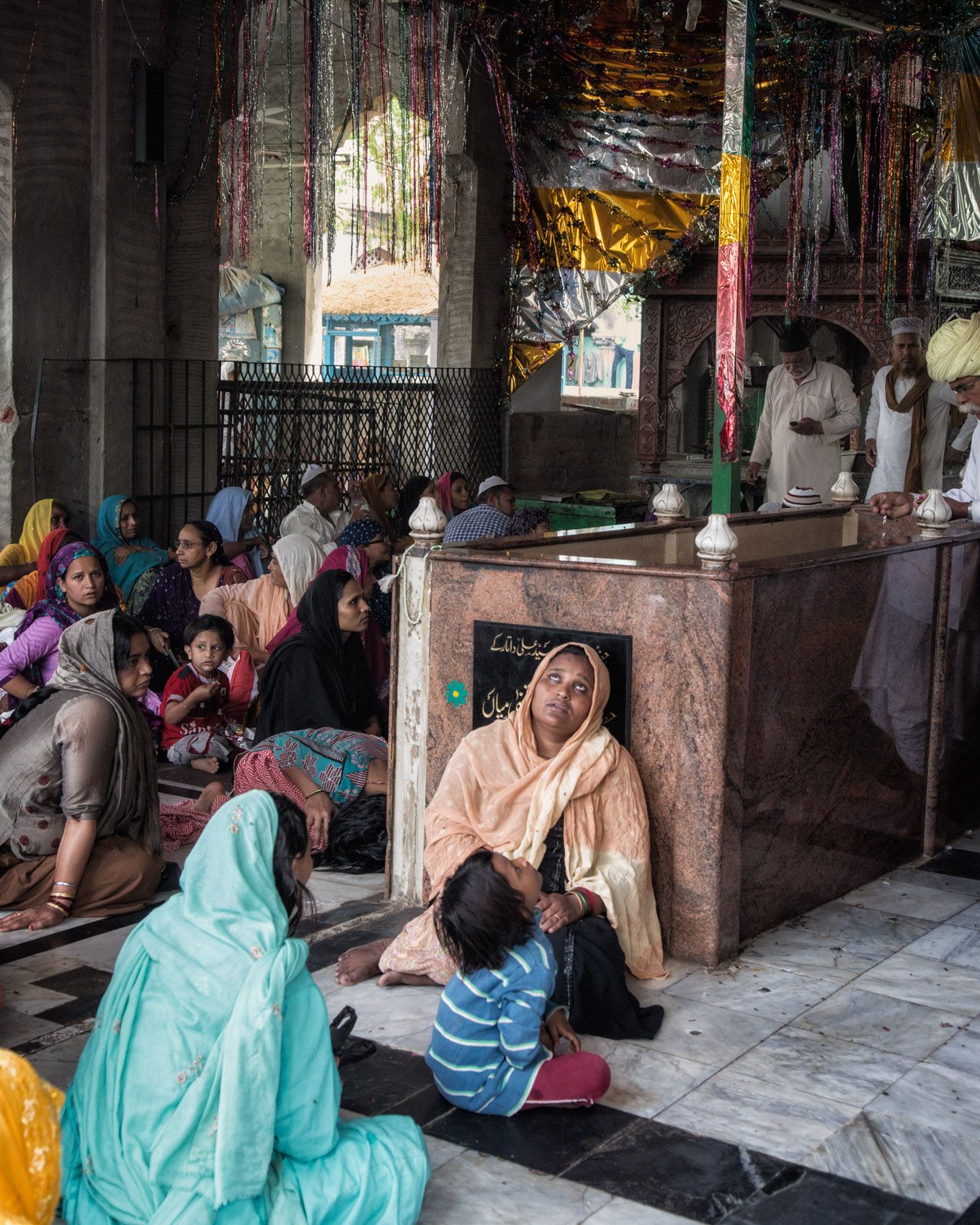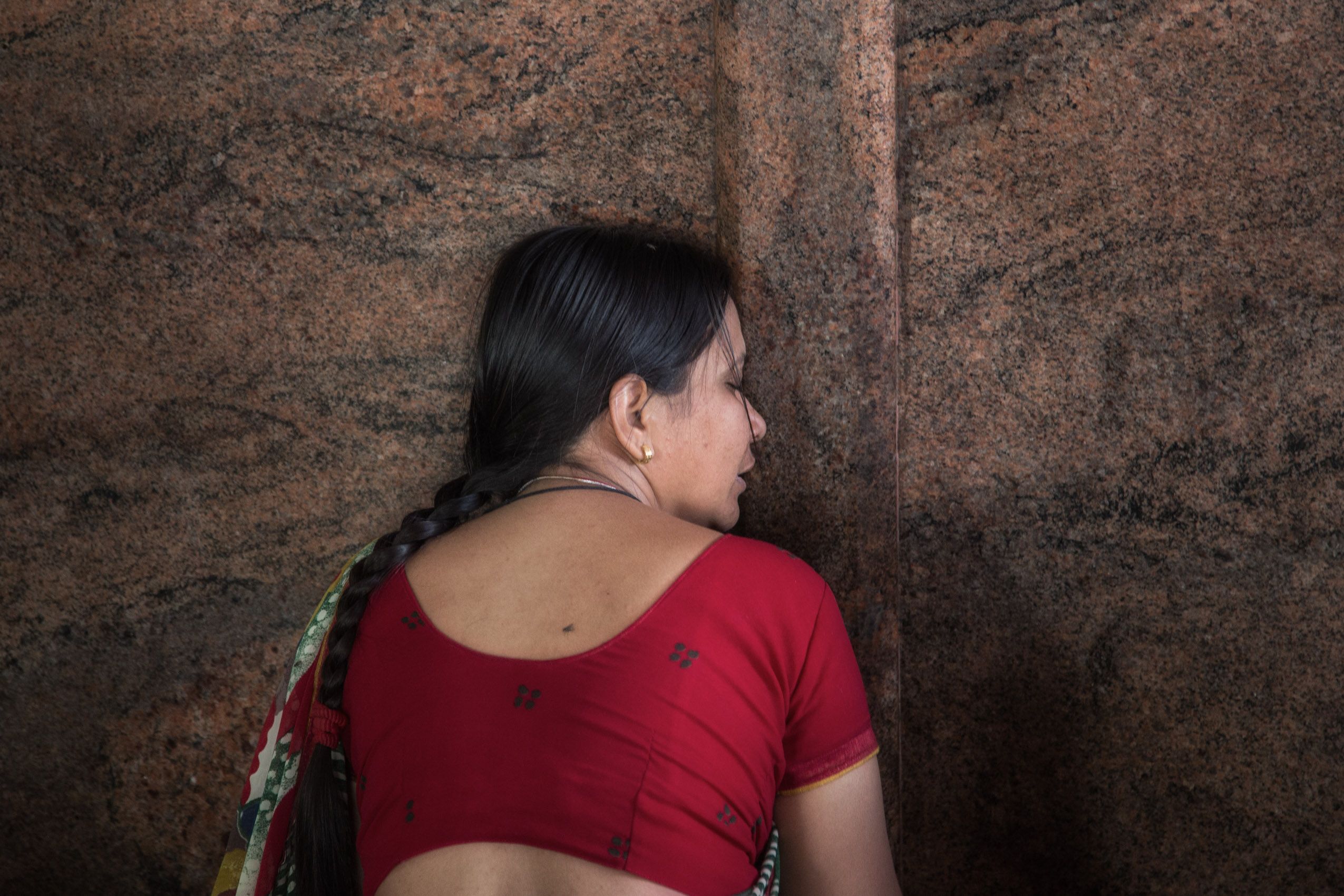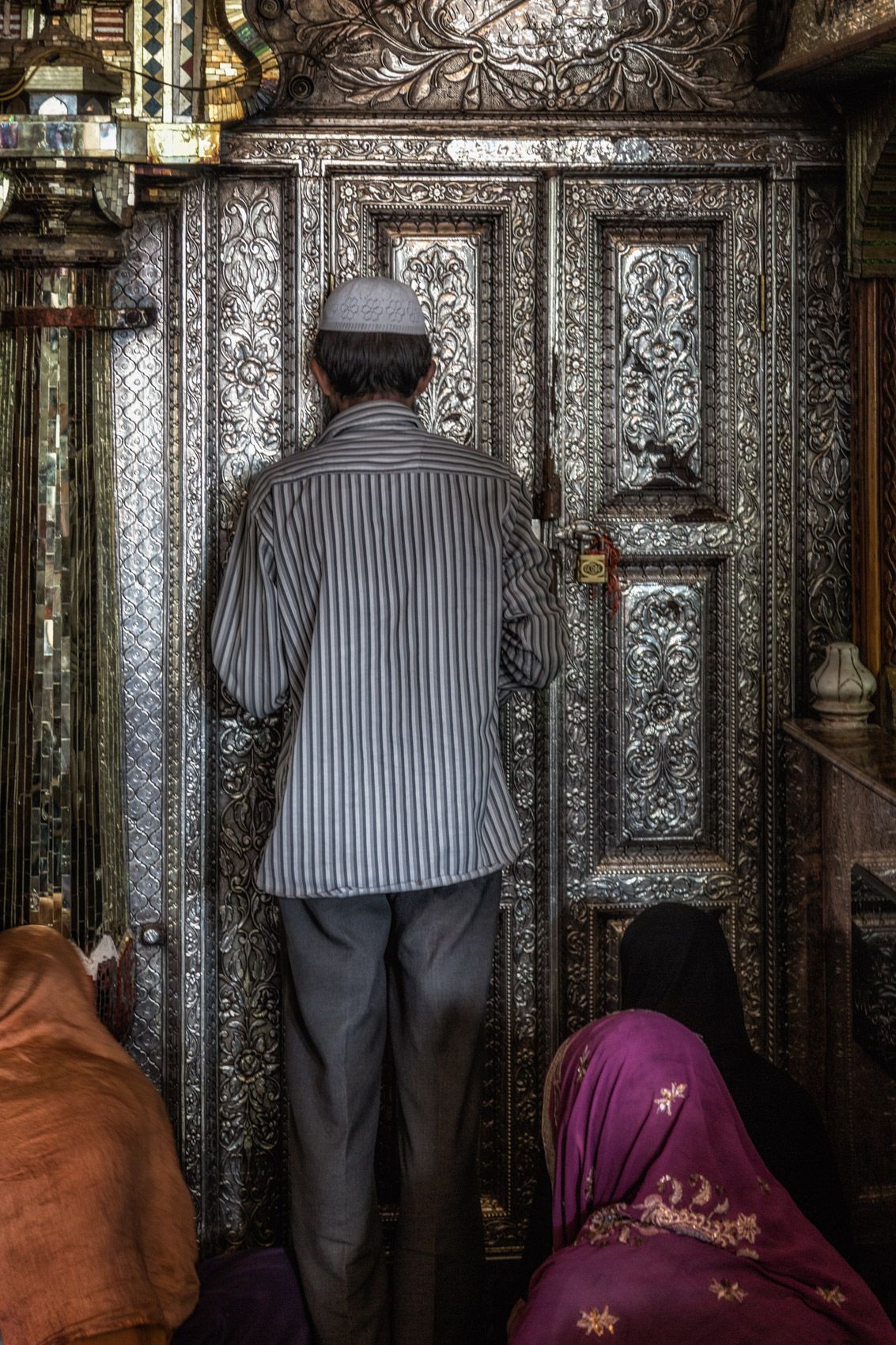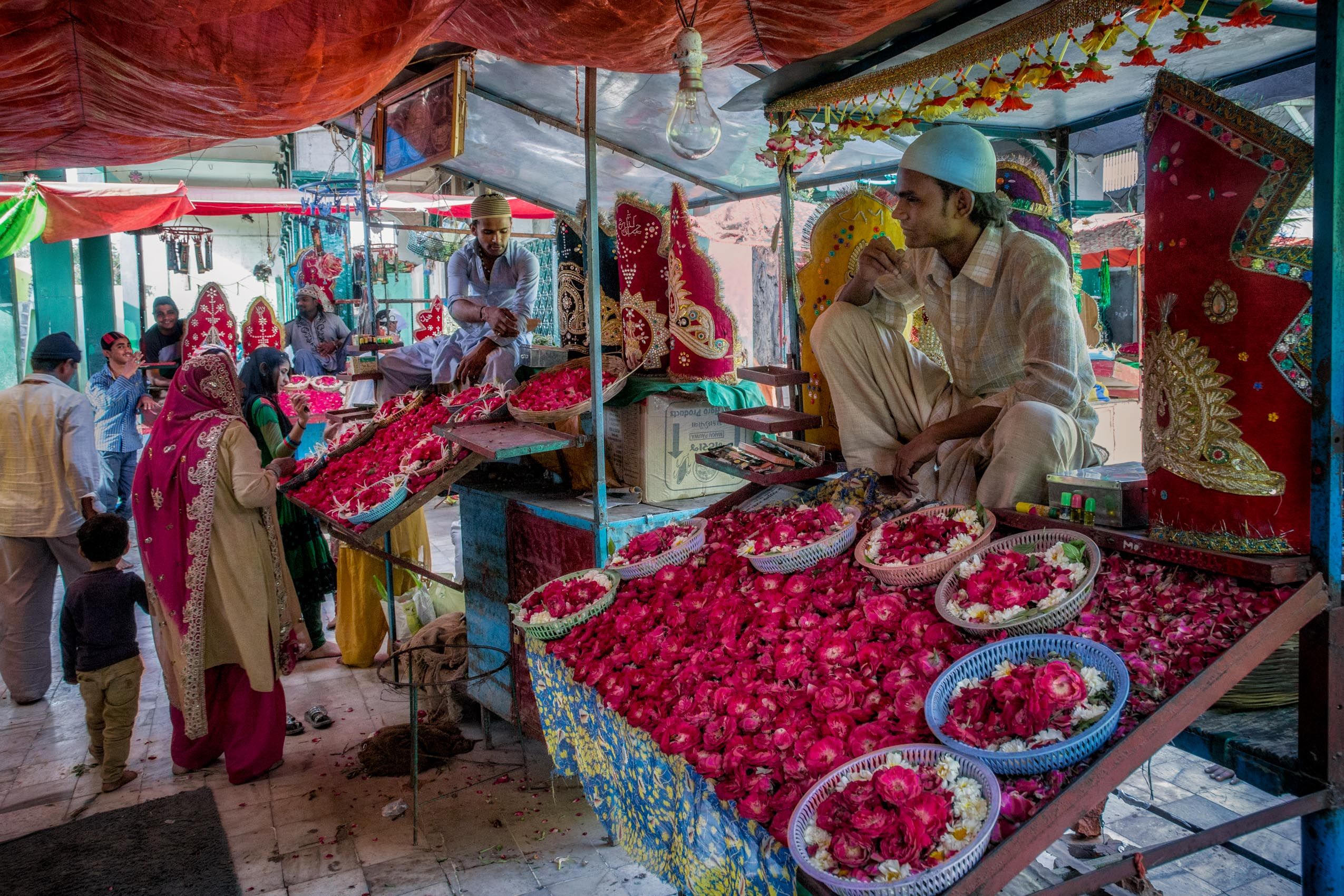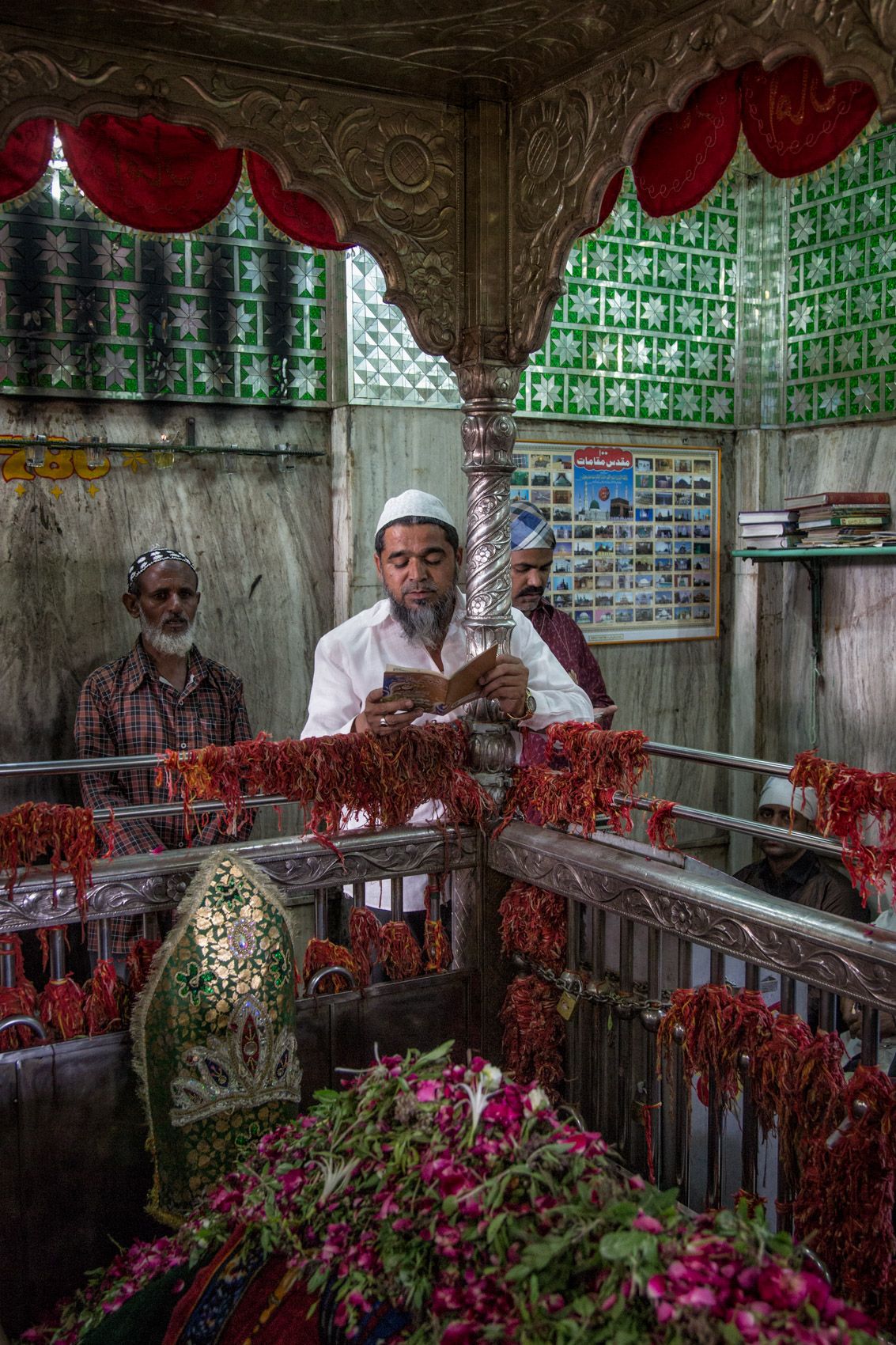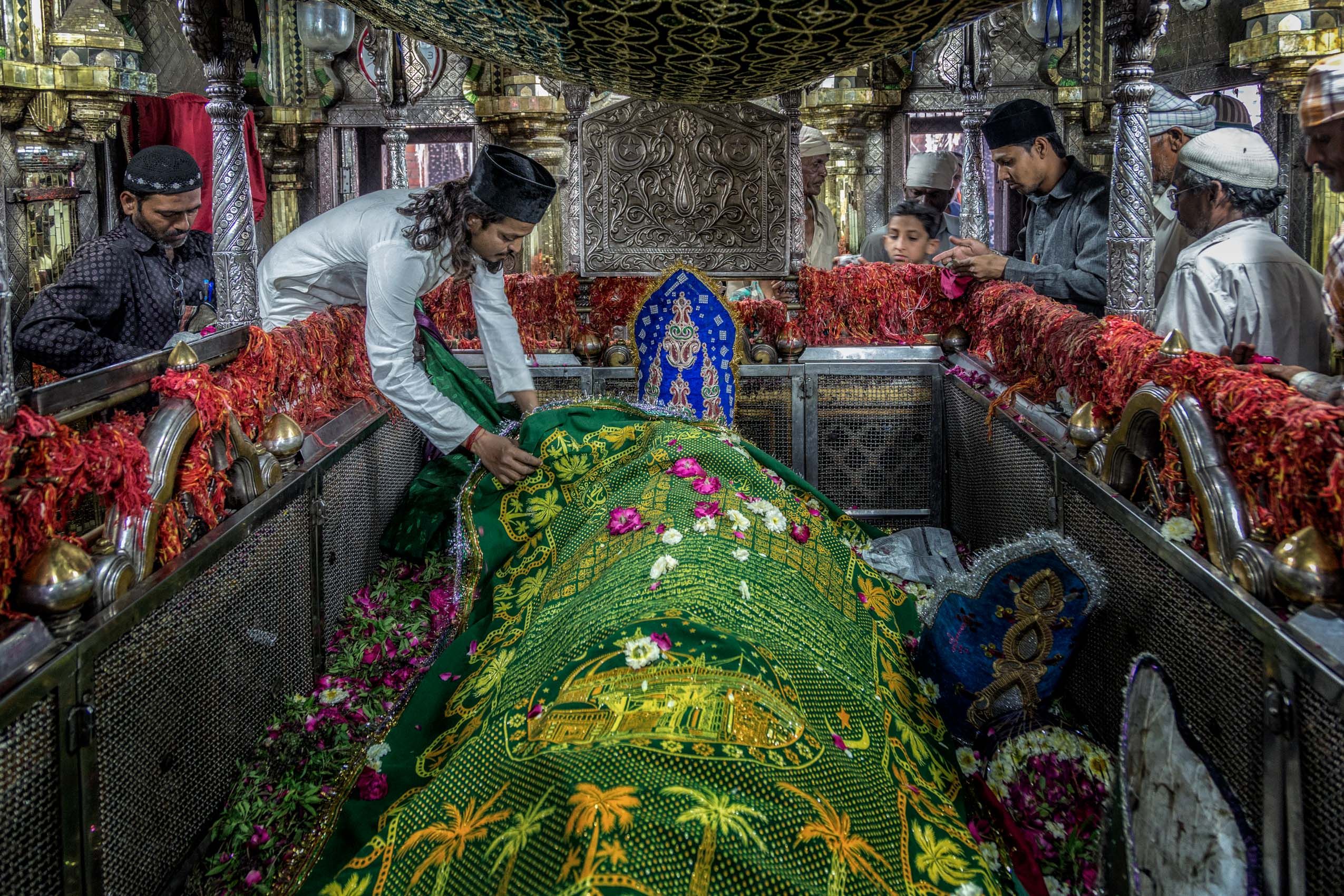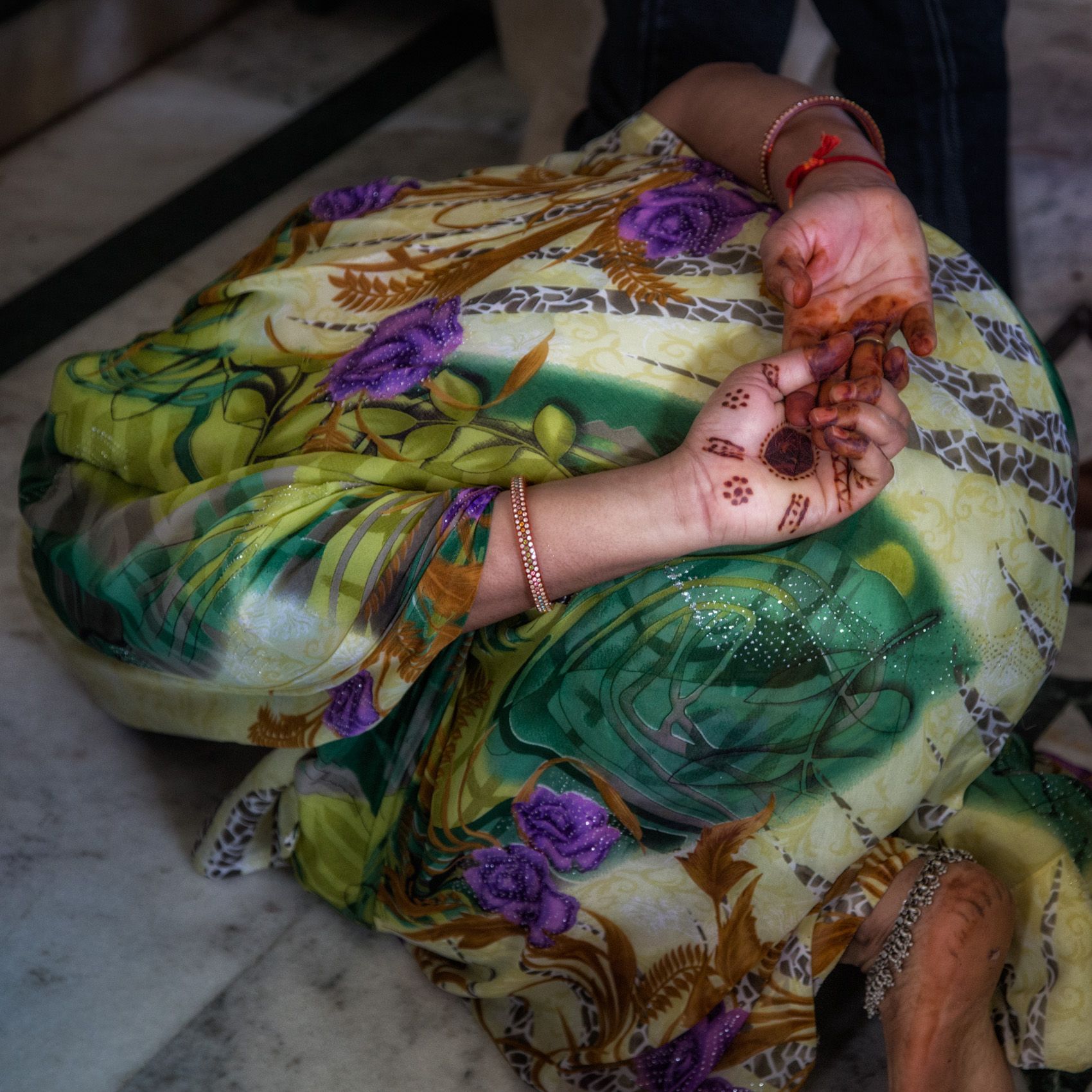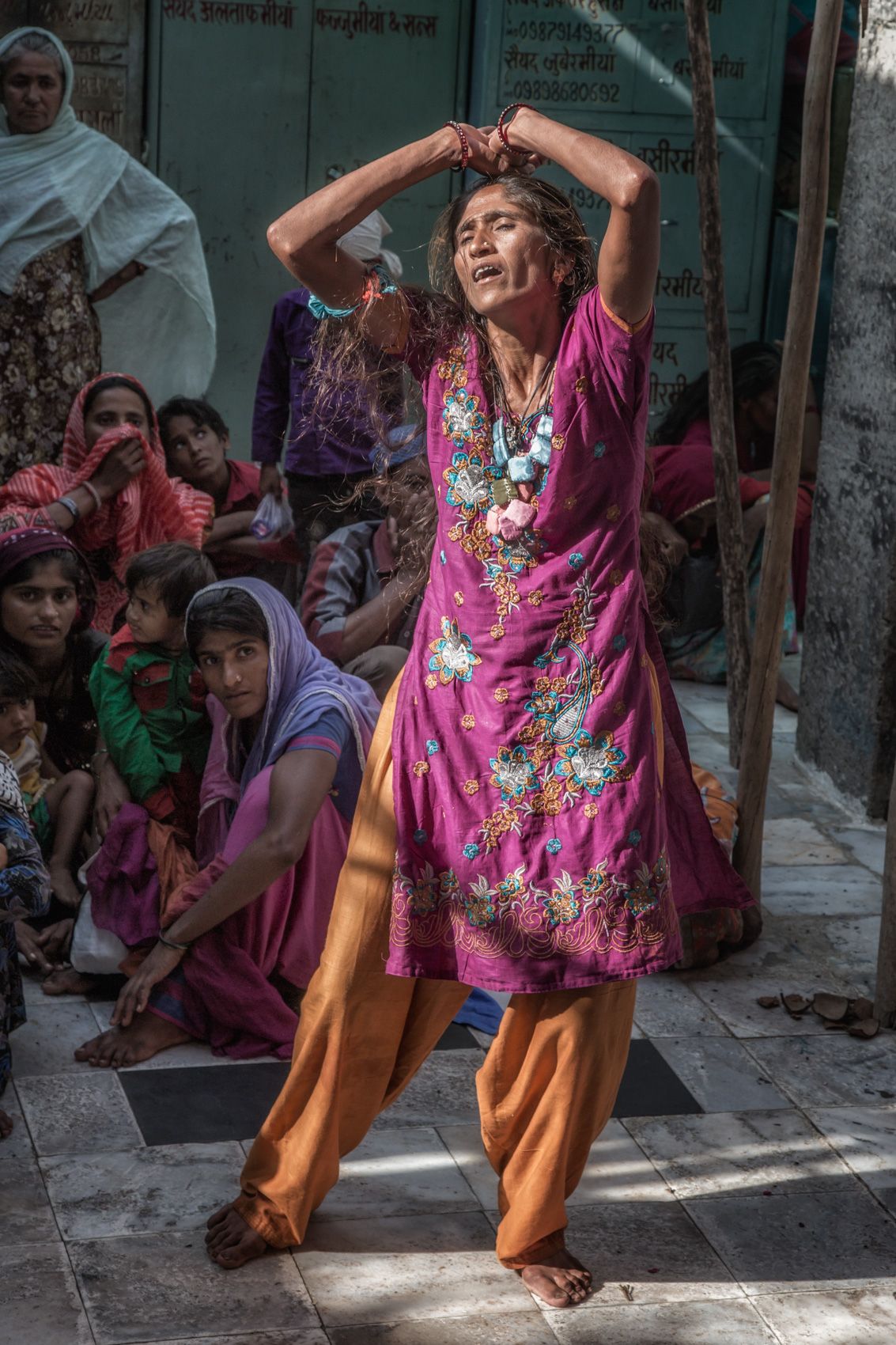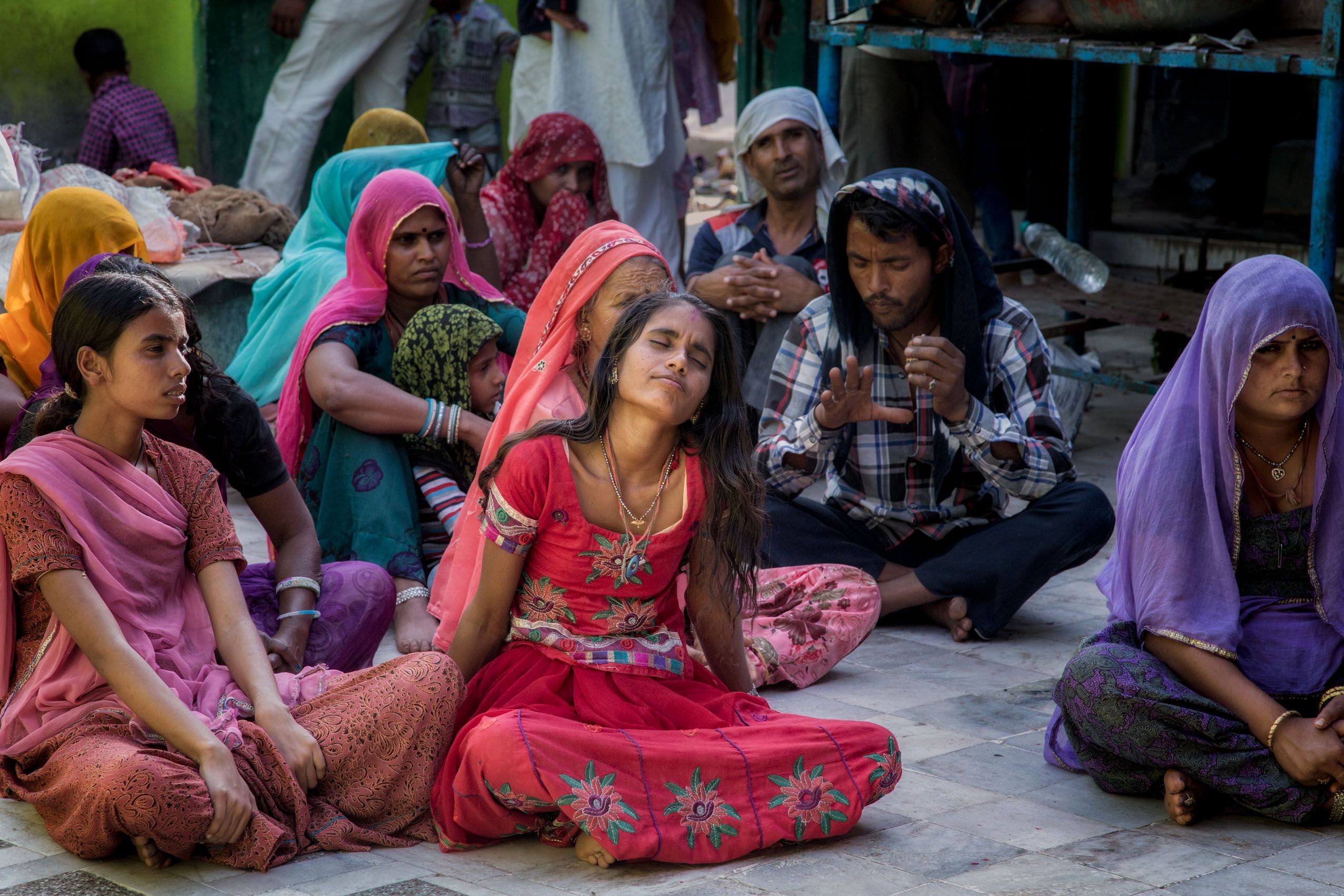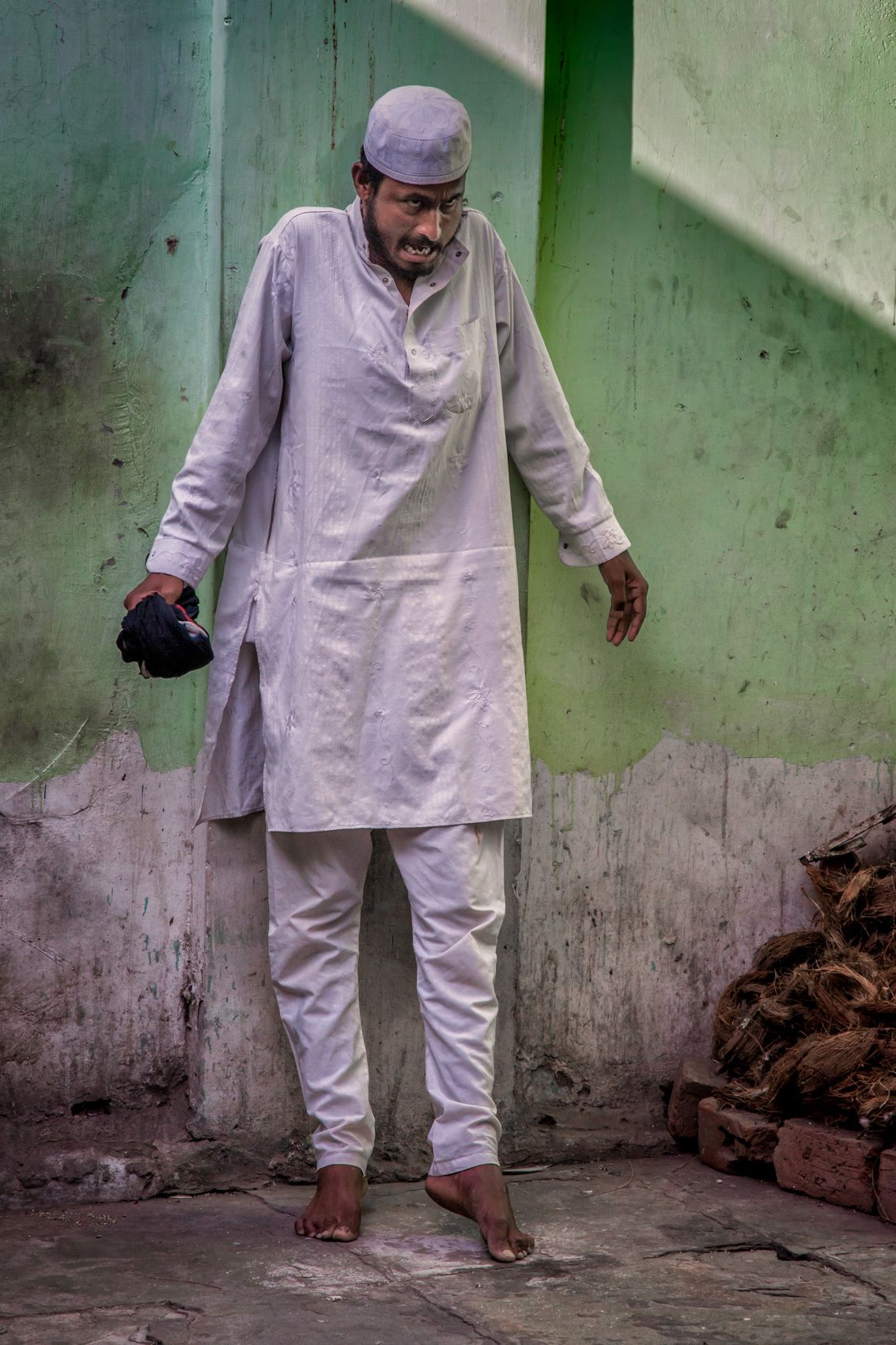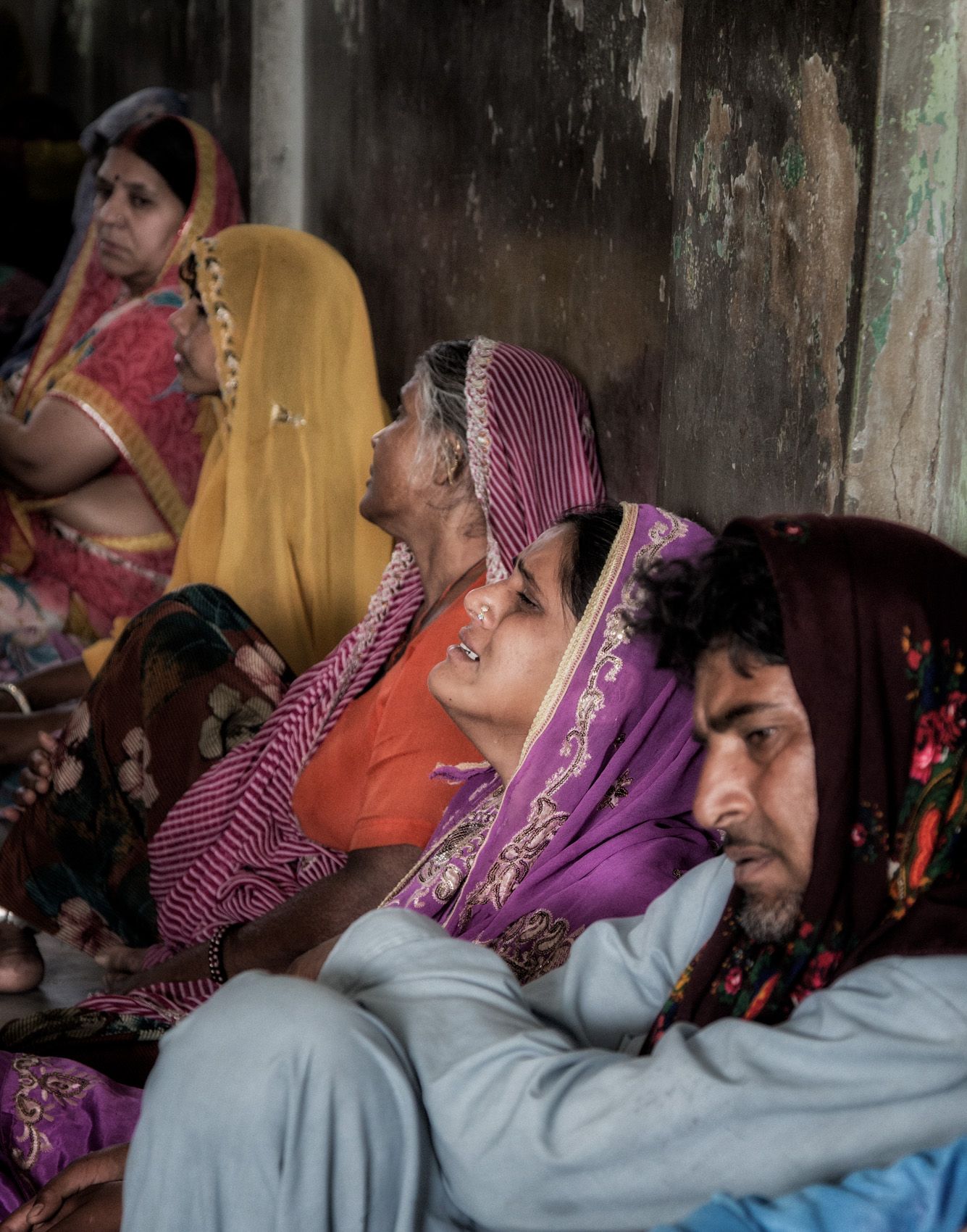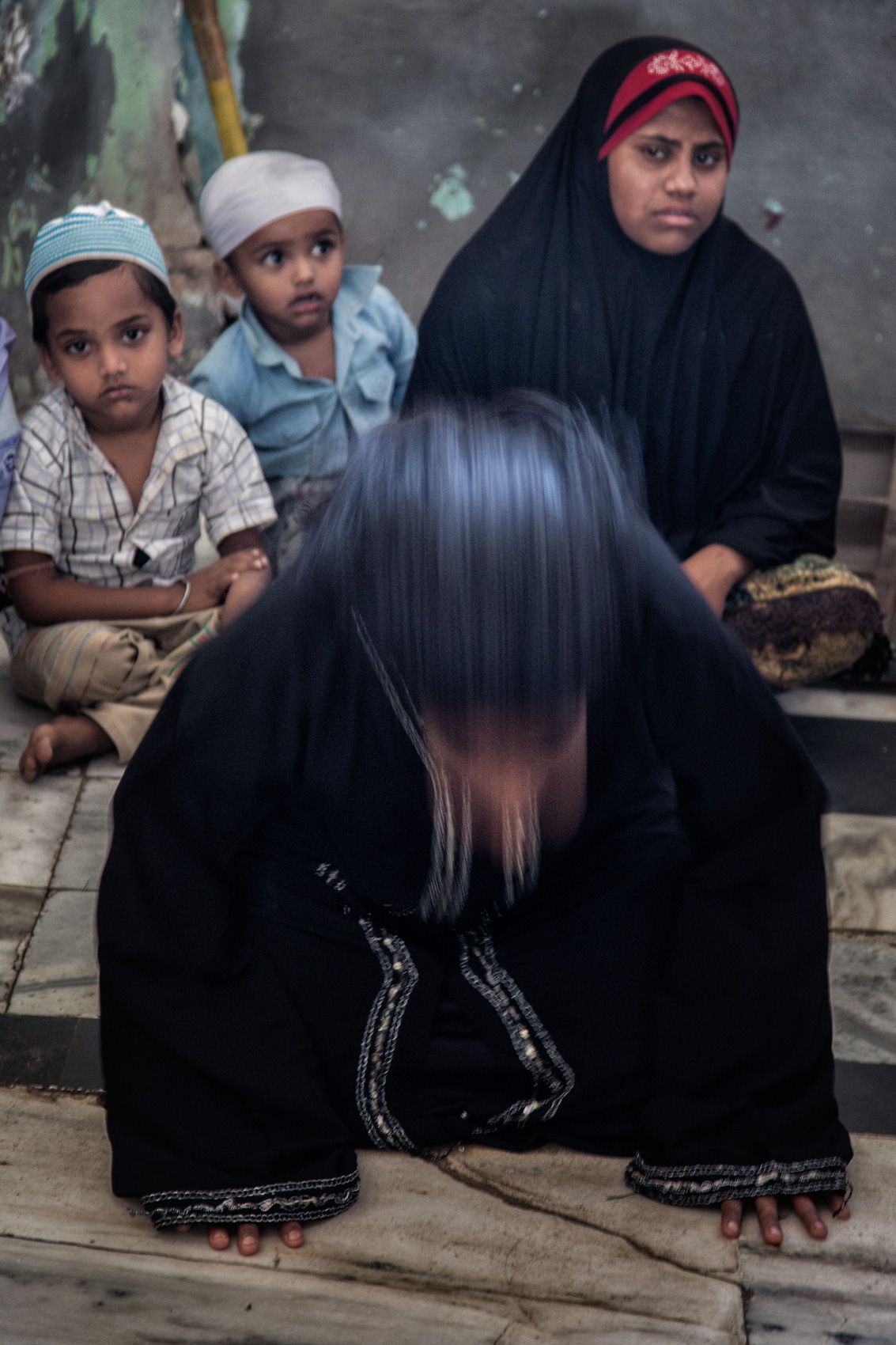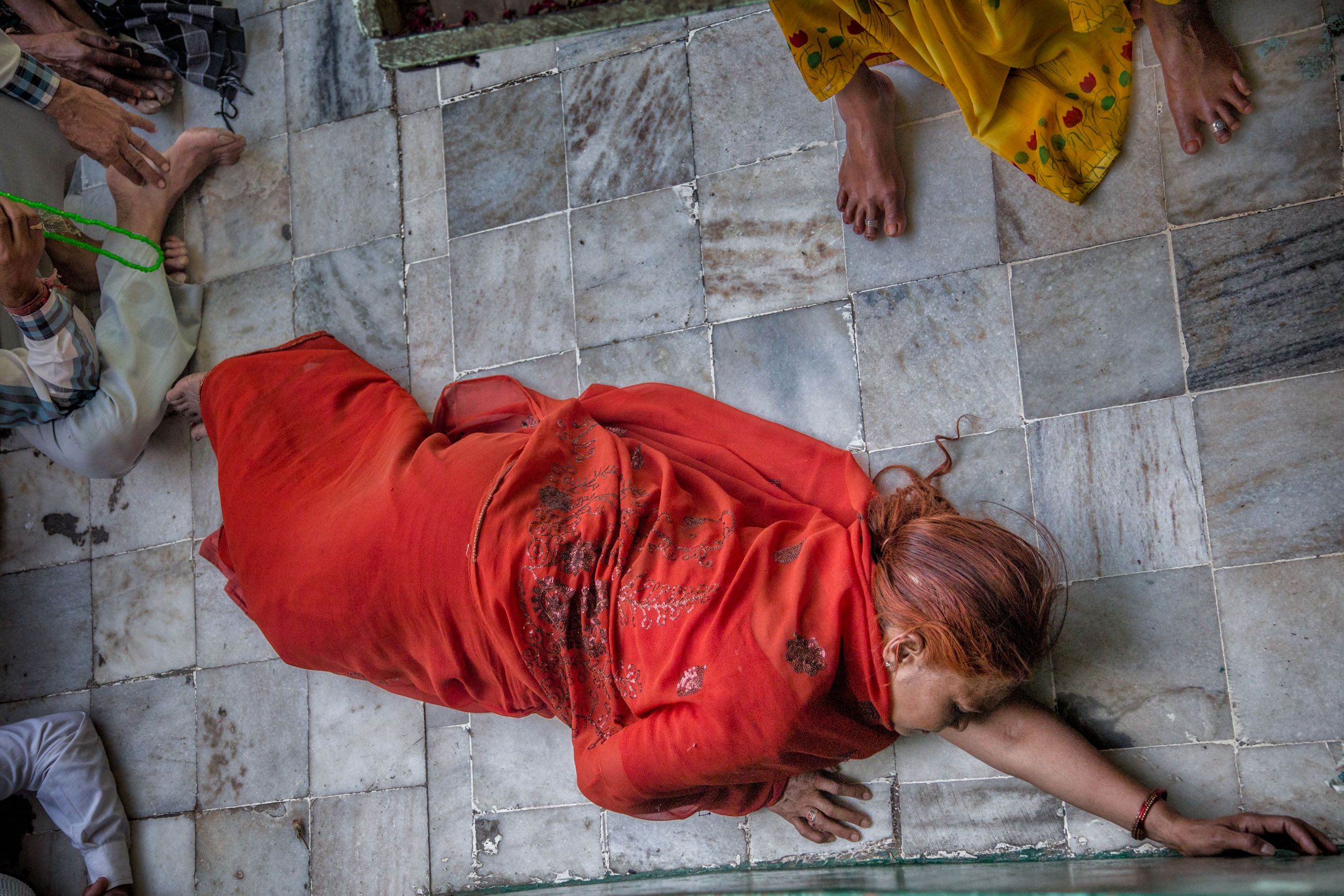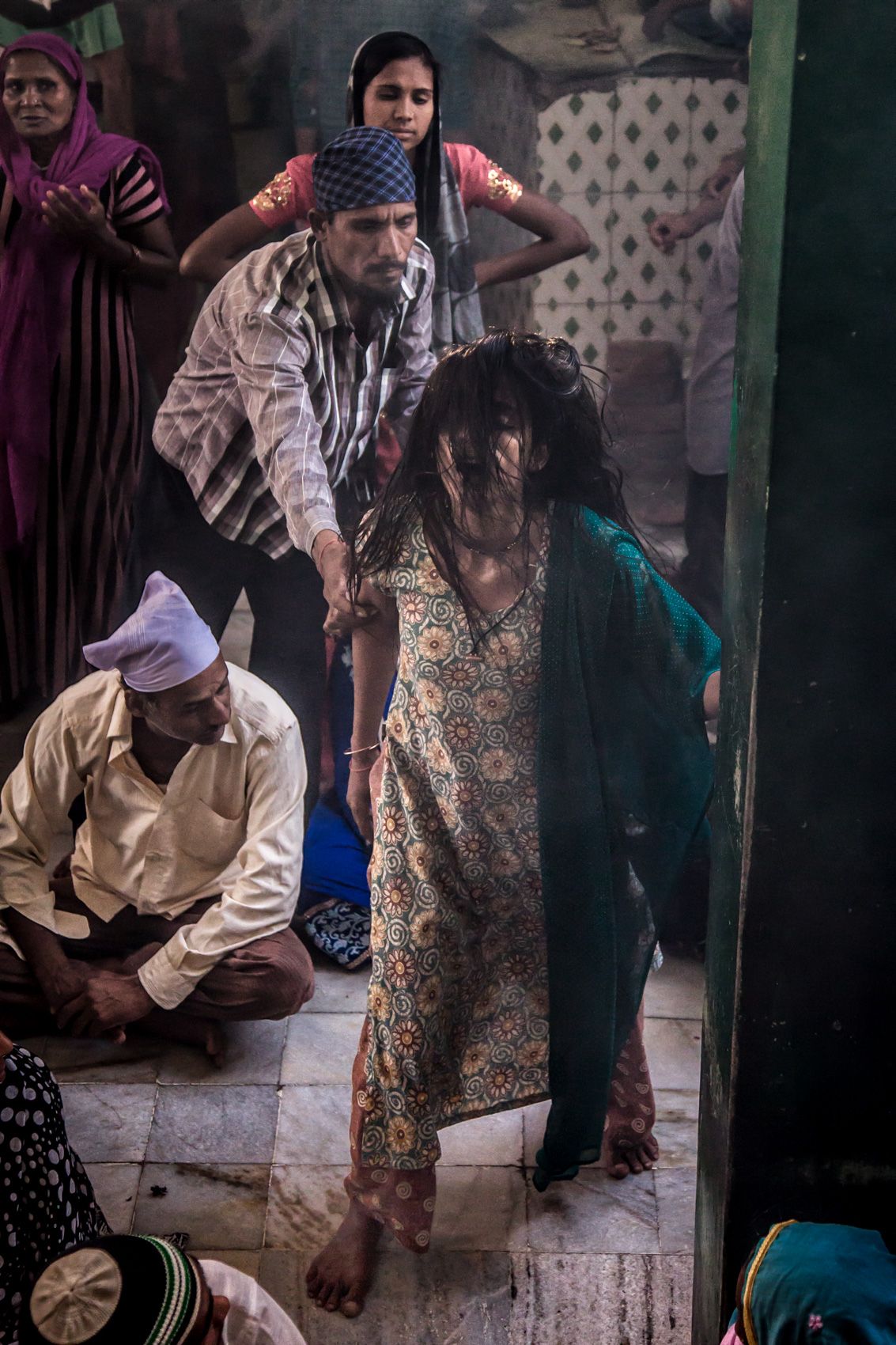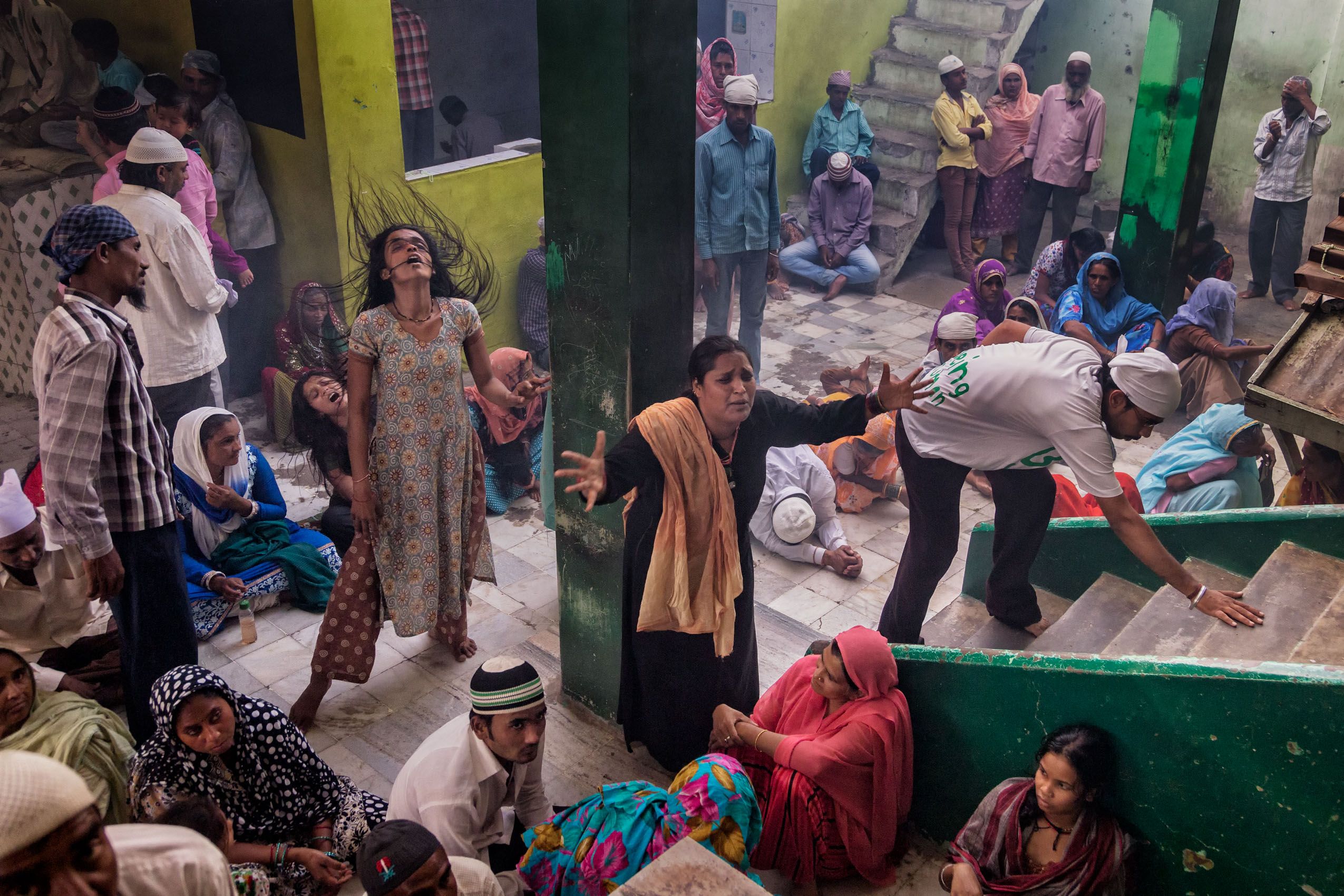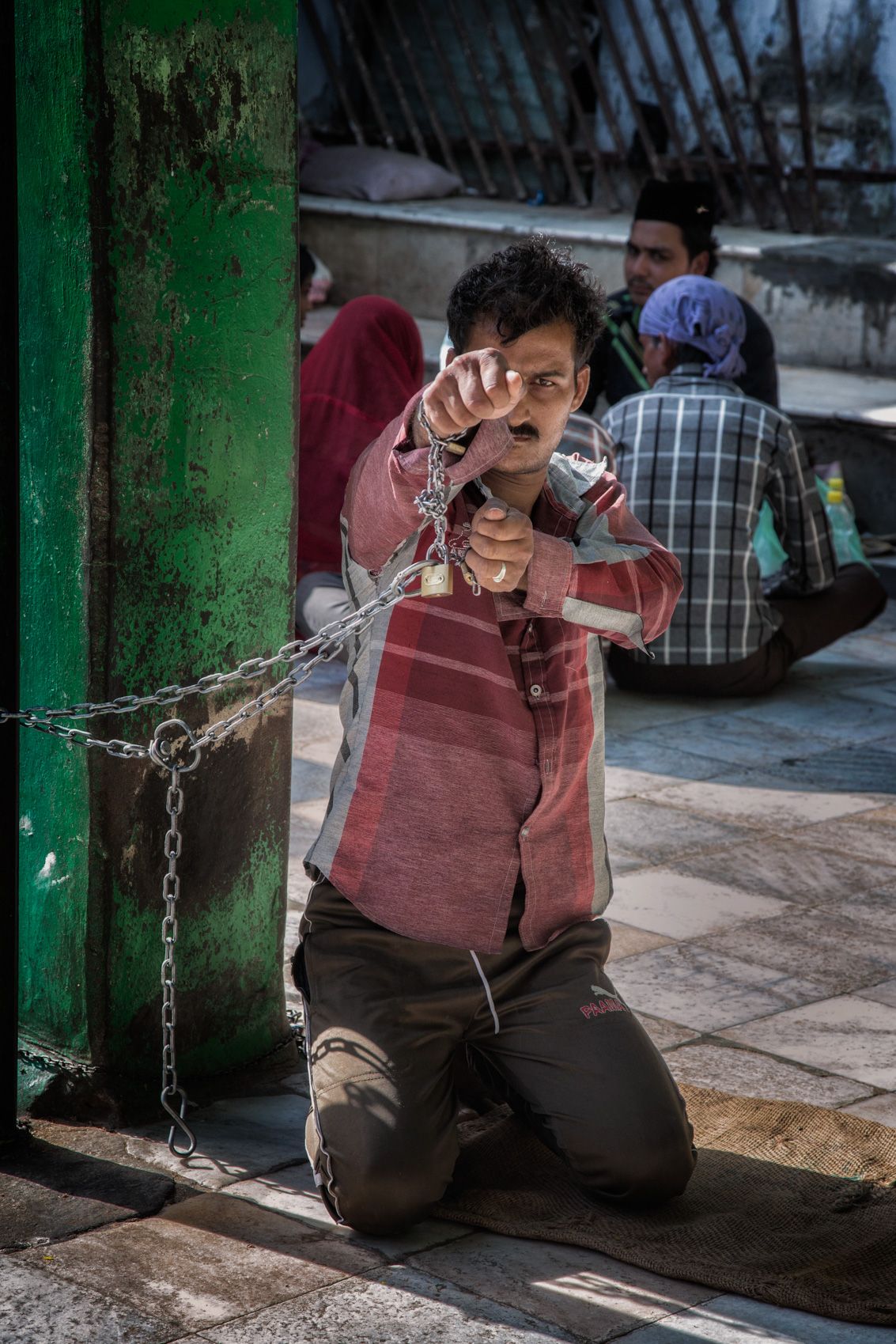Possession and Exorcism at a Sufi Shrine
The mystical, sensuous and ecumenical strain of Islam known as Sufism, of Persian and Afghani origins, has been a central element in north Indian spiritual culture for several centuries, where it has long coexisted comfortably with Hindu and other faiths. The shrines (dargahs) of medieval Sufi saints (pirs) have become major sites of pilgrimage for Indian Hindus as well as for Indian Muslims, centers of spiritual power that draw devotees in search of blessing, cleansing, and relief of distress. The two dargahs where these images were captured, in close proximity to each other in the far western state of Gujarat, are especially noted as places catering to those—primarily but not exclusively women—suffering from mental afflictions believed to betoken possession by evil spirits (jinns). Here, usually accompanied by family members including parents or spouses and small children, their struggle with the forces within them is acted out in screams and shouts, rhythmical swaying, rolling around on the ground, sudden bursts of physical violence toward self or others, often alternating with states of trance or passivity or sleepwalking. Some are chained to protect themselves and others. At the center of each shrine is a room holding the tomb of the saint, visited by a steady stream of circumambulating (male) pilgrims and attended by clerics who continually add piles of fresh rose petals to the embroidered cloths covering the tombs. The atmosphere in these places—heady with the scent of roses and mint, mixed with the strong smoke of burning resinous incense (loban) and the sound of chanting, screaming, shouting and sobbing, is at once that of a madhouse and a paradisal garden.

